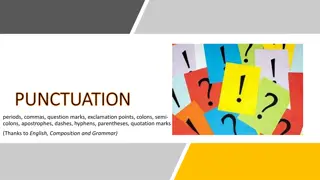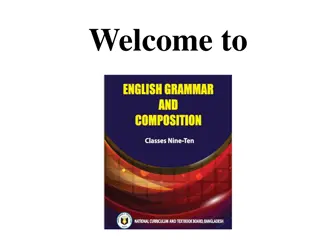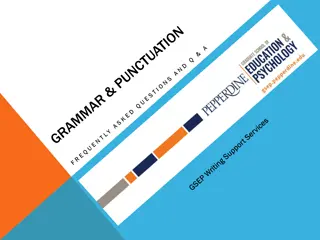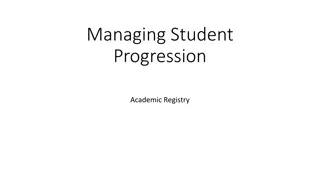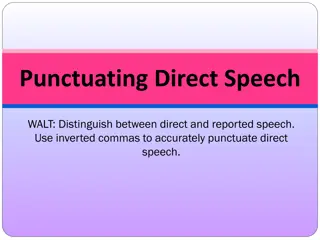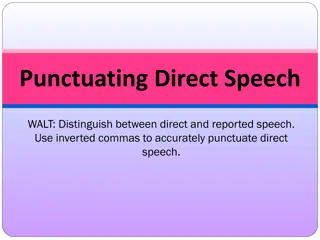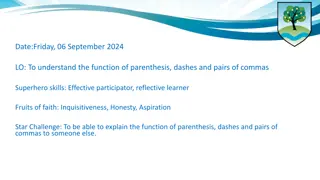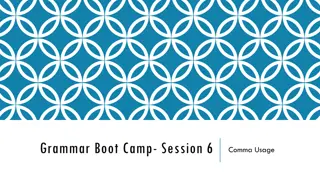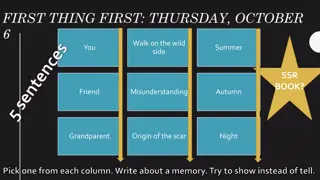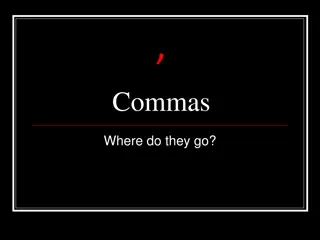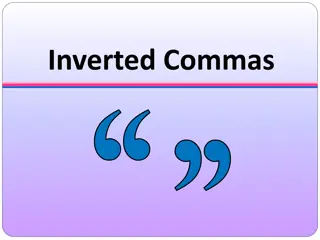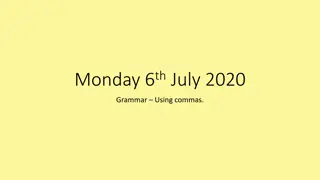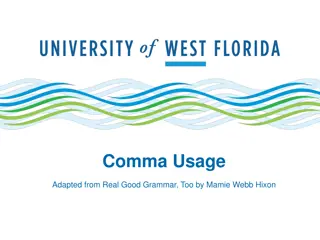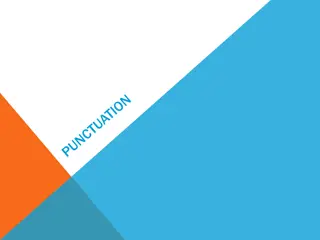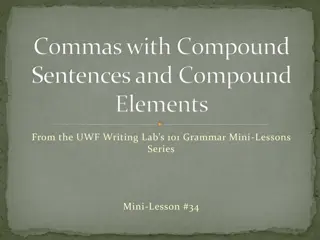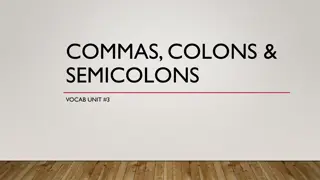Progression in the Use of Commas: Y1-Y6 Department of Children's Services
This educational resource visually demonstrates the progression in comma usage from Year 1 to Year 6 according to the Department of Children's Services. It includes examples of comma usage such as separating items in a list, before or after reporting clauses in direct speech, and after fronted adverbials. The slides illustrate how commas are used in sentences related to the story of Little Red Riding Hood, providing a clear understanding of comma rules at different stages of primary education.
Download Presentation

Please find below an Image/Link to download the presentation.
The content on the website is provided AS IS for your information and personal use only. It may not be sold, licensed, or shared on other websites without obtaining consent from the author.If you encounter any issues during the download, it is possible that the publisher has removed the file from their server.
You are allowed to download the files provided on this website for personal or commercial use, subject to the condition that they are used lawfully. All files are the property of their respective owners.
The content on the website is provided AS IS for your information and personal use only. It may not be sold, licensed, or shared on other websites without obtaining consent from the author.
E N D
Presentation Transcript
Progression in the use of commas (Y1 Y6) Department of Children s Services
Y1 No use of commas
Y2 Commas to separate items in a list . . . Little Red Riding Hood took eggs, butter, biscuits and flowers to her grandma.
Y3 Commas to separate items in a list . . . Little Red Riding Hood took eggs, butter, biscuits and flowers to her grandma.
Y4 Commas to separate items in a list . . . Little Red Riding Hood took eggs, butter, biscuits and flowers to her grandma.
Y4 Comma before or after a reporting clause in direct speech . . . What big ears you ve got, said Little Red Riding Hood. Little Red Riding Hood said, What big ears you ve got.
Y4 Comma after a fronted adverbial. . . When Little Red Riding Hood saw that the wolf had dressed up in Grandma s clothes, she ran as fast as she could out of the cottage and back through the wood.
Y5 Commas to separate items in a list . . . Little Red Riding Hood took eggs, butter, biscuits and flowers to her grandma.
Y5 Comma before or after a reporting clause in direct speech . . . What big ears you ve got, said Little Red Riding Hood. Little Red Riding Hood said, What big ears you ve got.
Y5 Comma after a fronted adverbial. . . When Little Red Riding Hood saw that the wolf had dressed up in Grandma s clothes, she ran as fast as she could out of the cottage and back through the wood.
Y5 Commas to indicate parenthesis . . . The wolf, who was dressed in Grandma s clothes, leered at Little Red riding Hood as she entered the cottage.
Y5 Commas to avoid ambiguity . . . Let s eat, Grandma, said Little Red Riding Hood.
Y6 Commas to separate items in a list . . . Little Red Riding Hood took eggs, butter, biscuits and flowers to her grandma.
Y6 Comma before or after a reporting clause in direct speech . . . What big ears you ve got, said Little Red Riding Hood. Little Red Riding Hood said, What big ears you ve got.
Y6 Comma after a fronted adverbial. . . When Little Red Riding Hood saw that the wolf had dressed up in Grandma s clothes, she ran as fast as she could out of the cottage and back through the wood.
Y6 Commas to indicate parenthesis . . . The wolf, who was dressed in Grandma s clothes, leered at Little Red riding Hood as she entered the cottage.
Y6 Commas to avoid ambiguity . . . Let s eat, Grandma, said Little Red Riding Hood.


